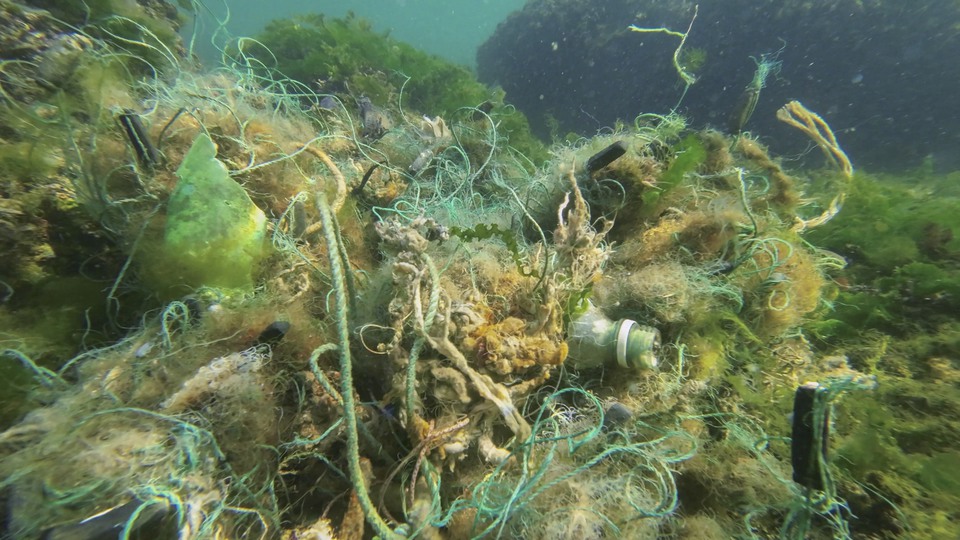
Tonnes of fishing gear is lost at sea every year
On behalf of the Swedish Environmental Protection Agency, and with funding from the Nordic Council of Ministers, IVL Swedish Environmental Research Institute has calculated the annual loss of fishing gear in the Nordic countries. The study points to a huge environmental challenge, where knowledge is generally low.
According to estimates in the study, the annual loss includes 28 million lures, 11 million sinkers and 140 million metres of fishing line. The study includes Sweden, Denmark, Norway, Finland, Iceland, Greenland and the Faroe Islands. According to a separate survey, an estimated 3,900 lobster traps are lost every year, on the Swedish west coast alone. In the Nordic countries there are an estimated 5.6 million active recreational fishers.
– Abandoned and lost fishing gear harms the marine environment in several ways. As well as fish and other organisms getting caught in ghost nets, fishing gear increases volumes of litter and pollution from macro- and microplastics, and hazardous chemicals, says Mikaela Boltenstern from IVL Swedish Environmental Research Institute.
The study is based on a limited statistical base consisting primarily of survey studies, stakeholder dialogues and import and sales statistics.
Awareness must increase
–Since there is very little data and hardly any literature on the subject, the results of this study must be seen as a rough initial estimate of the problem of lost fishing gear from recreational fishing. The results also provide valuable information for further work, says Mikaela Boltenstern.
Normally, nets and lines get caught on the sea or lake floor, and do not move very far. Most fishing gear gathers in popular fishing waters. But removing the gear from seas and lakes is time consuming and costly, and shore clean-ups, diving efforts and dredging are not particularly frequent.
– Awareness of the problem must increase among all types of fishers, including those who only go fishing once or twice a year, because the total number of people who fish is so high, and consequently a large amount of gear is lost. It's also a matter of what sort of products you buy. For instance, lots of soft lures are made in Asia, which doesn't have as strict legislation for endocrine-disrupting substances in products as the EU does. Also, fishing gear containing lead should be avoided, says Mikael Olshammar, project manager at IVL Swedish Environmental Reserch Institute.
Hazardous substances in fishing gear should be prohibited
The researchers suggest a number of measures for reducing the occurrence and effects of lost fishing gear:
- Hazardous substances such as lead and phthalates should be prohibited in fishing gear.
- Clean-up efforts should focus on places with high amounts of lost fishing gear.
- Nets and lobster traps should be marked with the owner's details.
- Retailers of fishing gear should provide information on this issue, to increase awareness among fishers.
- Retailers and industry actors should increase the incentives for reuse and recycling of fishing gear.
- Fishing gear manufacturers should declare the inclusion of chemical substances.
– I think the study is a good starting point for the ongoing work and for our understanding of the losses from recreational fishing, but further research is required. The plan is that this work will help facilitate a future recommendation for suitable measures to prevent losses from recreational fishing, says Lisa Bredahl Nerdal, analyst at the Department for Marine Management, Swedish Agency for Marine and Water Management.
In a follow-up study funded by the Swedish Agency for Marine and Water Management, the IVL researchers will focus on the Baltic states.
For more information, contact:
Mikael Olshammar, project manager, IVL Swedish Environmental Research Institute, tel. 010-788 65 08
Lisa Bredahl Nerdal, analyst, Department for Marine Management, Swedish Agency for Marine and Water Management, tel. 010-698 63 33
